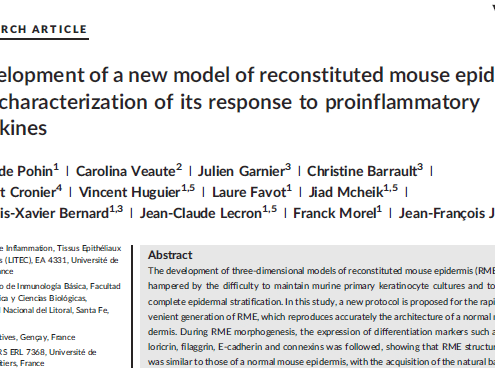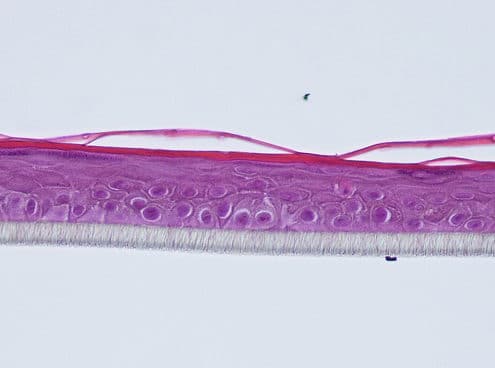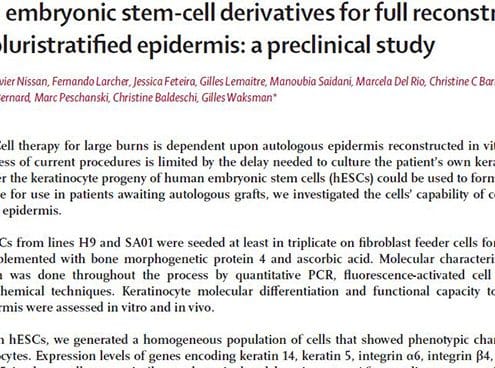
Development of a new model of reconstituted mouse epidermis and characterization of its response to proinflammatory cytokines
Cell and tissue engineering, Ingénierie cellulaire et tissulaireThe development of three-dimensional models of reconstituted mouse epidermis (RME) has been hampered by the difficulty to maintain murine primary keratinocyte cultures and to achieve a complete epidermal stratification. In this study, a new protocol is proposed for the rapid and convenient generation of RME,

Development of a new model of reconstructed aged skin useful to study antiageing effects of cosmetic compounds
Cell and tissue engineering, Ingénierie cellulaire et tissulaire, Skin ageing, Vieillissement cutanéThe development of new anti-ageing products needs performant in vitro models mimicking morphological changes and physiological modifications appearing during skin ageing. In order to have access to a simple model mimicking the epidermis ageing but in relation with a normal dermis, we have developed a new in vitro model of reconstructed skin comprising an aged epidermis covering a reconstructed dermis built with collagen and normal (young) fibroblasts.

Human embryonic stem-cell derivatives for full reconstruction of the pluristratified epidermis: a preclinical study
Cell and tissue engineering, Dermatology, Ingénierie cellulaire et tissulaire, Pharmacologie, Pharmacology, Wound healingTo assess whether the keratinocyte progeny of human embryonic stem cells (hESCs) could be used to form a temporary skin substitute for use in patients awaiting autologous grafts, we investigated the cells' capability of constructing a pluristratified epidermis.



